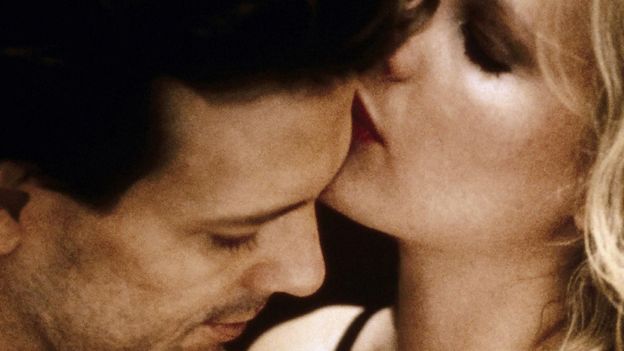Why Hollywood is shunning sex


As Helen Lewis points out, though, TV seems to have figured out what cinema still needs to: how to handle a hot potato. “On the BBC, I May Destroy You recently showed graphic sex scenes – but they weren’t titillating in the old-fashioned meaning of ‘explicit’, they were challenging, uncomfortable, and unflinching,” she says. “I think cinema is beginning to face that conversation: ‘What’s this sex scene doing here? Who is it for?'”
That questioning has undeniably led to positive changes around representation of female desire on the screen, too. Frances Rayner, the founder of website The Clit Test, which examines film and television through the lens of whether its sex depicts female pleasure and sexuality honestly, says, “While the majority of sex scenes are still very heteronormative, there’s been a noticeble increase in sex acts that privilege female sexual pleasure, like cunnilingus. And we’ve seen an uptick in scenes of women masturbating – something which was previously notable for its absence.”
Is film losing sensuality too?
But for depictions of sex to be progressive, they have to be included in the first place. In general, is it the case that in little over a century of American cinema, movies really might have inched closer to Puritanism, even as wider society has on the whole become more sexually open? Hagen’s study of sex scenes evidentially suggests this, though it’s worth remembering that its stats only apply to literal onscreen depictions of sex, not for the tiny moments of raw sensuality that cannot be scaled on any real metric. Cinematically speaking, the carnal can be just as much about allusion and suggestion; a bite into a lush summer peach or the sinewy slide of a satin dress onto a carpeted floor.
Suggestion is built into cinema at a molecular level; it’s one of the principles behind the entire concept of editing. Our minds make lateral jumps from one image to the next, adding their implications together so quickly that it’s hardly conscious. And when it comes to sexual suggestions, US cinema has always had to be a little bit sneaky. Censorship in Hollywood reigned supreme from 1932, at the instatement of the Hays Production Code, to its eventual slow dissolve in the late 1950s. Much of the code focused on banning pre-marital relations and refusing to show even married couples in bed together, never mind revealing a visibly pregnant woman, an interracial relationship, or the implication of homosexuality.
None of this meant that clever filmmakers could not try to flout the code with a million and one innuendos and sideways looks. Sometimes the sexual was made deliciously metaphorical, as with Jacques Tourneur’s classic horror Cat People (1942), where uncontrolled female sexuality is literally predatory. But genuine nudity, or the “sex scene” as we know it, simply did not exist in mainstream American film until the early 60s. So much of Hollywood’s history of sex was smuggled, implied, or gestural; so little of it was explicit, until the sexual revolution of the 60s and 70s.








